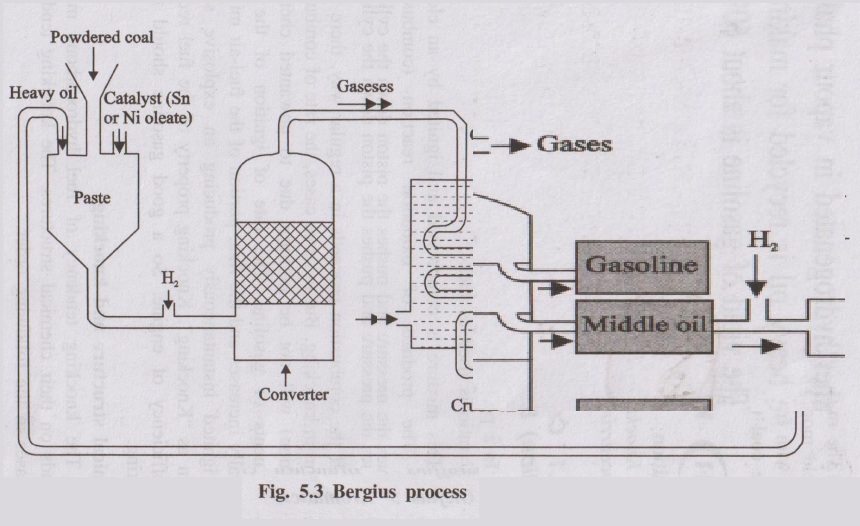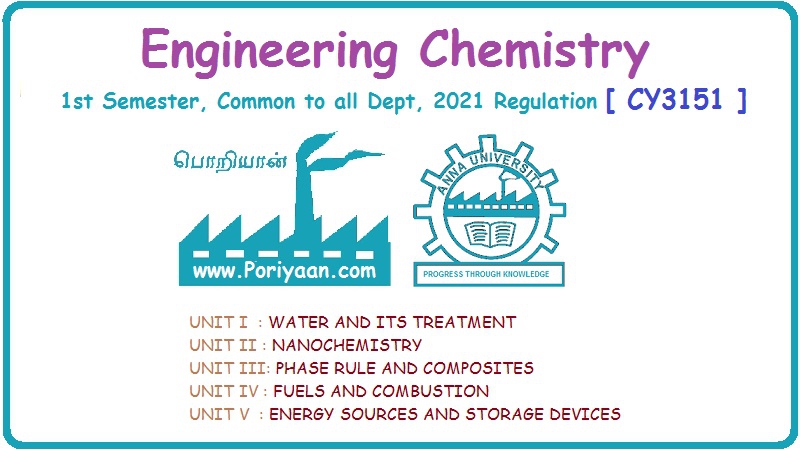Engineering Chemistry: Unit IV: a. Fuels
Synthetic Petrol
Manufacture of Synthetic Petrol, hydrogenation of coal
The gasoline, obtained from the fractional distillation of crude petroleum oil, is called straight run petrol.
SYNTHETIC PETROL
The gasoline, obtained from the fractional distillation of crude
petroleum oil, is called straight run petrol. As the use of gasoline is
increased, the amount of straight run gasoline is not enough to meet the
requirement of the present community. Hence, we are in need of finding out a
method of synthesizing petrol.
1. Hydrogenation of coal (or) Manufacture of synthetic petrol
Coal contains about 4.5% hydrogen compared to about 18% in
petroleum. So, coal is a hydrogen deficient compound.
If coal is heated with hydrogen to high temperature under high
pressure, it is converted to gasoline. The preparation of liquid fuels
from solid coal is called hydrogenation of coal (or) synthetic petrol.
An important method, available for the hydrogenation of coal is
Bergius process (or direct method).
Bergius process (or) (direct method)
In this process, (fig. 5.3) the finely powdered coal is made into
a paste with heavy oil and a catalyst powder (tin or nickel oleate) is mixed
with it. The paste is pumped along with hydrogen gas into the converter, where
the paste is heated to 400 - 450°C under a pressure of 200 – 250 atm.
During this process hydrogen combines with coal to form saturated
higher hydrocarbons, which undergo further decomposition at higher temperature
to yield mixture of lower hydrocarbons. The mixture is led to a condenser,
where the crude oil is obtained.
The crude oil is then fractionated to yield
(i) Gasoline (ii) Middle oil (iii) Heavy oil.

The middle oil is further hydrogenated in vapour phase to yield
more gasoline. The heavy oil is recycled for making paste with fresh coal dust.
The yield of gasoline is about 60% of the coal used.
Engineering Chemistry: Unit IV: a. Fuels : Tag: Engineering Chemistry : Manufacture of Synthetic Petrol, hydrogenation of coal - Synthetic Petrol
Related Topics
Related Subjects
Engineering Chemistry
CY3151 1st Semester | 2021 Regulation | 1st Semester Common to all Dept 2021 Regulation
